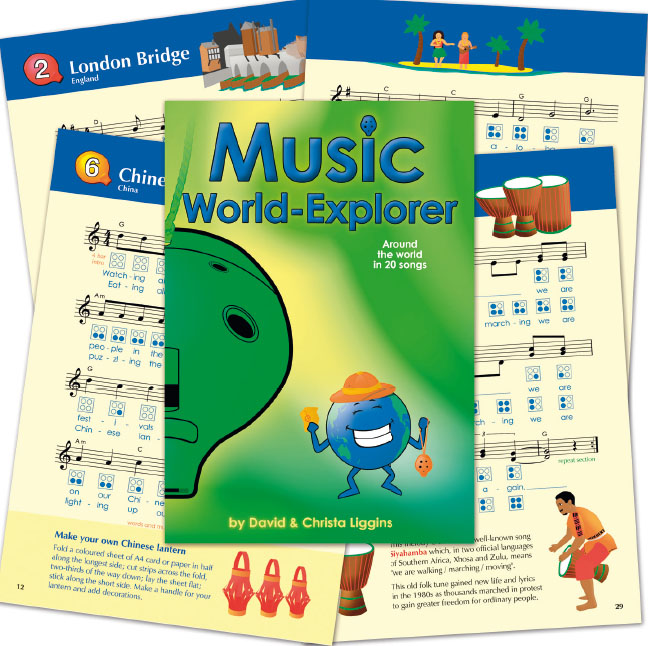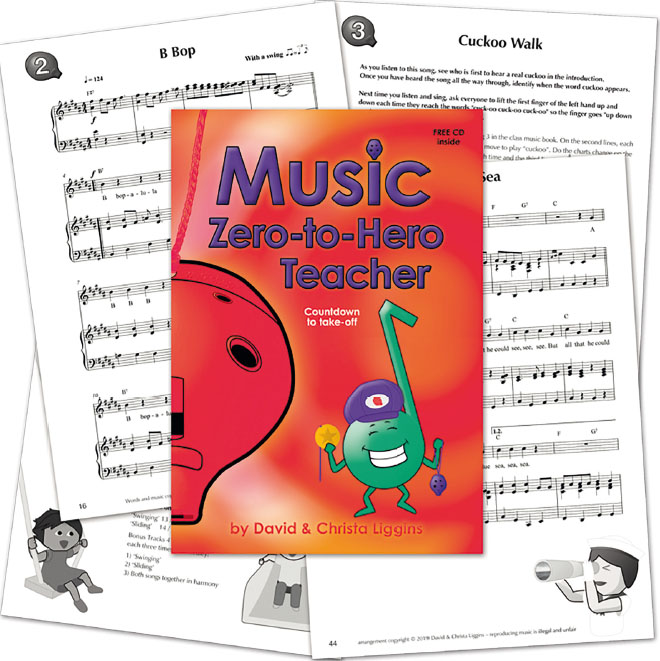
The ocarina has long been my preferred choice for whole class instrumental teaching. I first started using them in a state primary school, in a deprived area of Peterborough, after meeting Ocarina Workshop's David and Christa Liggins (and having an impromptu tour of their home-based ocarina museum) in the early 1990s. As a violinist and pianist, woodwind instruments were certainly not in my natural comfort zone, but I felt at home at once, and this ease of handling is one of their major benefits for whole class teaching. For the past 25 years, I have stuck with the beloved original tutor books (Play your Ocarina 1-4). They present a clear structure for building skills and knowledge, while providing a varied choice of repertoire and genre. Key features such as, the use of Oc Pix (pictorial tablature) continues in these brand-new resources, Adventurous Music-Making. This approach allows pupils to play recognizable tunes immediately, rather than being forced to play combinations of B, A and G for several weeks!
First impressions
The new books are very attractive, and the children commented immediately on the eye-catching, vibrantly glossy covers, and the full-colour inside pages. The original books have monochrome inner pages, which serve their purpose well enough, but it was telling that the children really liked the change. The pupil books are small scale and this also really appealed. There are three new titles available at the moment, with two more in the pipeline. One is most definitely a beginner resource, while the others are themed compilations for extension and breadth. The series comes with larger scale teacher books, as well as high-quality CDs to support with demonstration and accompaniment.
A closer look
To examine the books in more detail, let's start with the more conventional, Zero-to Hero. One of the main differences between this book and the original Play your Ocarina, is that much of the material is entirely original. Children (and non-specialist teachers too) would definitely need to hear the recordings to be able to play the pieces. It's one thing to be able to play ‘Twinkle Twinkle’, another entirely to play ‘Bright Blue Day’. The pages are jam-packed with extra information and detail and lots of illustrations, which my pupils found very inspiring. Crotchets and minims feature first in notation, with dotted patterns and quavers making an appearance further down the line. There is no explanation of rhythmic notation in the book – although pitch is covered quite comprehensively from the start – so children would need the teacher to explain the different note values themselves. As with the original books, chord symbols are included, meaning that budding guitarists, ukelele or keyboard players can be brought into the fray as accompanists very early on. The teacher book is a larger, A4 format and is an extremely detailed resource. There is a moderately easy piano accompaniment for each piece, about Grade 3-4 standard, and a page of notes to support teachers, including ideas for extension, further listening and ways to develop key musical ideas.
The two new themed publications – Music Time-Traveller and Music World-Explorer – were an absolute hit with the children in my classes. They loved the cross-curricular concept of both and were super-eager to try them out. The geographical half of the pairing starts with a world map highlighting from whence each tune hails. The material is varied and well-chosen, taking in Europe, the Americas, Africa, Asia and the Pacific Ring of Fire. It mainly comprises of arrangements of existing traditional pieces. There is a great range of cultural and geographical information included. My pupils loved ‘Chinese Lanterns’ which linked with previous pentatonic scale work, and one child was thrilled to play a version of ‘Pokarekare Ana’ from New Zealand, which she'd recently prepared for an ABRSM singing exam. The North American pieces will also fit nicely into the KS2 curriculum. The South and Central American repertoire features some challenging rhythmic patterns with syncopation and ties, which would be perfect for stretching more able pupils. The African selection introduces some simple and effective part playing, while the unusual scale pattern of ‘Snake Charmer’ intrigued the children and was a useful introduction to different modes and scales for the older children. The teacher's book is again very detailed and I liked the ‘Wider-World’ boxes with ideas for different instruments as well as wider listening suggestions for each piece.

The resources use pictorial tablature and Western notation
The historical half of the pairing starts with a very useful timeline from the Stone Age to the near future, and places each piece accordingly, alongside information about each work. The cross curricular value of this resource is tremendous and pieces would be great for a class assembly! Handel's Hornpipe from the Water Music and Vivaldi's ‘Spring’ from The Four Seasons both get an outing – it's good to see this use of significant pieces from the Western canon continuing. The children loved ‘Disco Party 2050’, the harmonies created by the two sections produced a very pleasing effect. My one gripe with this book is the lack of recognition of non-tonal music. It would have been good to have at least a taste of serialism or atonality in the 20th-century section, or maybe a nod to minimalism?

Each book has a teacher and student version
In conclusion, these are an excellent addition to the arsenal of an ocarina leader, and I would highly recommend them. The children all commented on the fact that these are not only ocarina books, they are full to the brim with information.
These resources can be purchased from ocarina.co.uk/shop








